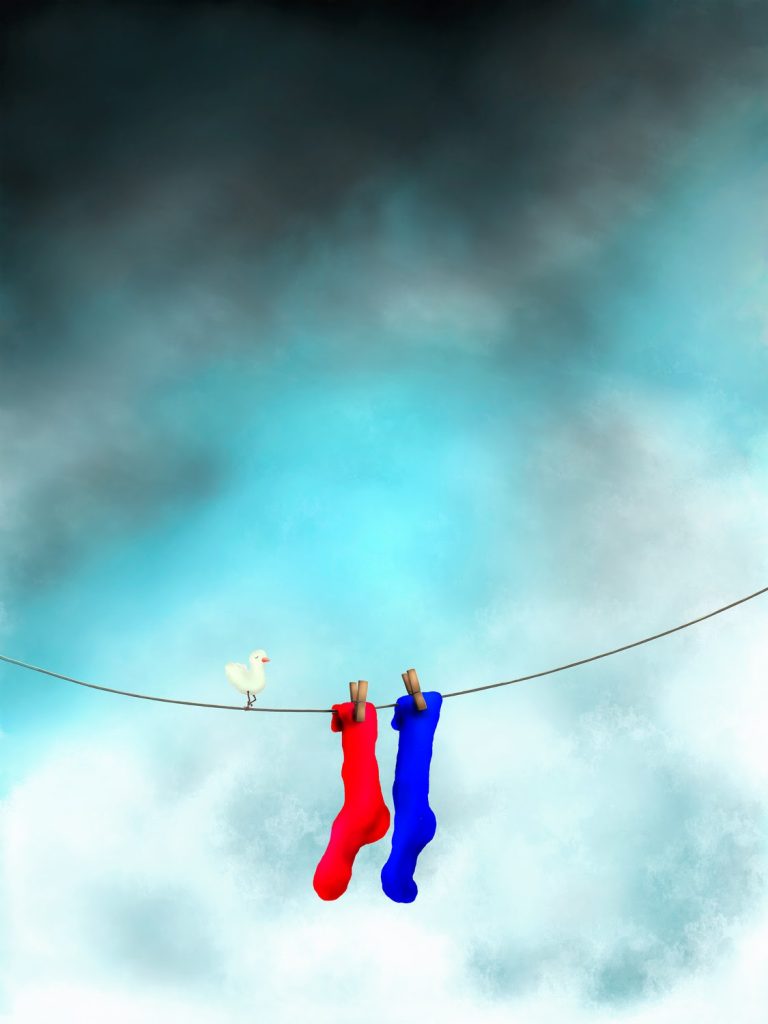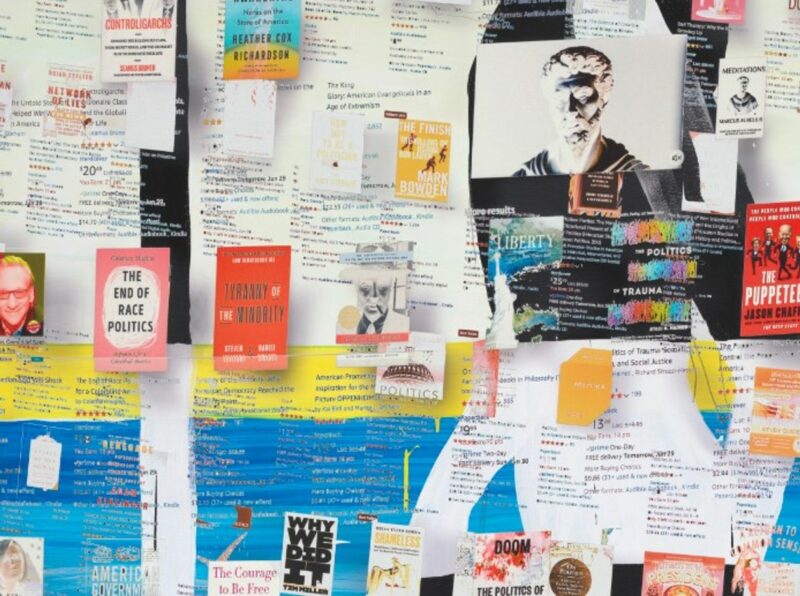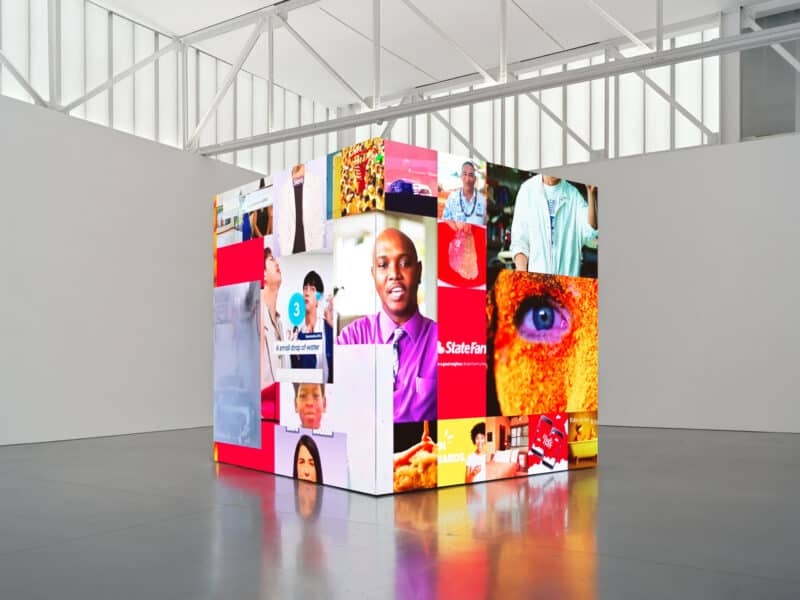
Images is an exhibition of new paintings and sculptures by Urs Fischer opening at Gagosian Los Angeles
In Fischer’s work, images emerge from an odd liminal space between the real and the imagined, between what does, and could, exist. Over the past year, he has been creating paintings digitally, inventing things, rooms, and spaces using color and light. On a screen, as opposed to paper or canvas, Fischer is able to paint with light itself—moving illuminated pixels around, juxtaposing clean lines and gradients, and reflecting on the subtle atmospheric changes across day and night, summer and winter, Los Angeles and New York.
Silkscreened onto aluminum panels, the paintings in this exhibition—vertical compositions broken up into multiple rectangular passages—take on the scale of modern abstraction, yet they all describe imaginary interior and exterior worlds. Windows appear often: one glows behind a gauzy white curtain, looking onto swaying palm trees; another reflects a sunrise or sunset, with a still life on a table barely visible through fingerprints on the glass; and another frames a building across the street, where nine more windows reveal smeared and fragmented California views. In other paintings, Fischer imagines canvases hanging on walls, hit with swathes and squares of light pouring in from an unseen source. The fictional paintings and sculptures depict animals, food, city streets, or messy brushstrokes, but they—like the light—only exist within Fischer’s constructed environments; they need not adhere to any history, law, or logic.
Fischer presents characters and drawings that seem capable of disappearing at any moment. In one painting, a small orange bird sits on a branch, floating in a dark gray sky. Though its legs are in sharp focus, its body becomes a vaporous orb, glowing within the surrounding clouds. And in an uncanny sculptural ecosystem below, two motorized snails slowly wander through the gallery, leaving trails of slime in their wake. These gleaming lines, which evaporate over time, wind across the floor, uniting the other sculptures—a smoking volcano, a snowman, a palm tree—within a swirling, ephemeral landscape. Looming over the scene, the surrounding paintingsUrs Fischer mines the potential of materials—from clay, steel, and paint to bread, dirt, and produce—to create works that disorient and bewilder. Through scale distortions, illusion, and the juxtaposition of common objects, his sculptures, paintings, photographs, and large-scale installations explore themes of perception and representation while maintaining a witty irreverence and mordant humor.
Fischer began his artistic career studying photography at the Schule für Gestaltung in Zurich. He later lived in London and Los Angeles, and shared a studio with Rudolf Stingel in both Berlin and New York. Themes of absence and presence, as well as the processes of art production, pervade his work, in which Fischer makes use of tables, chairs, shadows, and light to explore distortion and anthropomorphism. In Stuhl mit (1995–2001), bulbous, fabric-covered legs merge with a wooden chair, and in Studies for chairs for individual seating positions (1993), the absence of a human body is suggested by a sawdust and rubber mold draped over the furniture. Food is also a major element in Fischer’s work. Rotting, melting, and crumbling, and placed in juxtaposition with permanent materials like metal, bricks, and mortar, it serves as a memento mori; Rotten Foundation (1998) comprises a brick structure built on a foundation of rotting produce; Untitled (Bread House) (2004–05), a Swiss chalet constructed entirely of loaves of bread, was left to be eaten by parakeets; and in the Problem Paintings (2011–), portraits mounted on aluminum panels are obscured by images of eggs, peppers, and kiwis, as well as twisted bolts and half-smoked cigarettes.
In 2009 Fischer had his first large-scale solo presentation in an American museum, at New York’s New Museum; the exhibition featured a series of immersive installations and hallucinatory environments including cityscapes and mirrored labyrinths. At the Venice Biennale in 2011, his wax copy of Giambologna’s late-sixteenth-century sculpture Rape of the Sabine Women slowly melted, looming over another candle depicting an ordinary man wearing glasses and a sport coat. The candle works, which Fischer has produced since 2001, attest to his mastery of entropy, as well as his simultaneous incorporation and rejection of tradition.
Fischer had his first solo show with Gagosian in 2012. The following year for his exhibition Yes at the Geffen Contemporary at MOCA Los Angeles, 1,400 volunteers produced unfired clay sculptures in the weeks leading up to the exhibition. As soon as Fischer has accomplished one material feat, he embarks on another, in ways that are complicated and playful, messy and perfected.form vivid, even cinematic, backdrops: a montage of disparate settings for a small, peculiar world.
URS FISCHER Images January 11–February 9, 2019 Beverly Hills Opening Reception Friday, January 11, 6–8pm
gagosian.com
About The Artist
Urs Fischer mines the potential of materials—from clay, steel, and paint to bread, dirt, and produce—to create works that disorient and bewilder. Through scale distortions, illusion, and the juxtaposition of common objects, his sculptures, paintings, photographs, and large-scale installations explore themes of perception and representation while maintaining a witty irreverence and mordant humor.
Fischer began his artistic career studying photography at the Schule für Gestaltung in Zurich. He later lived in London and Los Angeles, and shared a studio with Rudolf Stingel in both Berlin and New York. Themes of absence and presence, as well as the processes of art production, pervade his work, in which Fischer makes use of tables, chairs, shadows, and light to explore distortion and anthropomorphism. In Stuhl mit (1995–2001), bulbous, fabric-covered legs merge with a wooden chair, and in Studies for chairs for individual seating positions (1993), the absence of a human body is suggested by a sawdust and rubber mold draped over the furniture. Food is also a major element in Fischer’s work. Rotting, melting, and crumbling, and placed in juxtaposition with permanent materials like metal, bricks, and mortar, it serves as a memento mori; Rotten Foundation (1998) comprises a brick structure built on a foundation of rotting produce; Untitled (Bread House) (2004–05), a Swiss chalet constructed entirely of loaves of bread, was left to be eaten by parakeets; and in the Problem Paintings (2011–), portraits mounted on aluminum panels are obscured by images of eggs, peppers, and kiwis, as well as twisted bolts and half-smoked cigarettes.
In 2009 Fischer had his first large-scale solo presentation in an American museum, at New York’s New Museum; the exhibition featured a series of immersive installations and hallucinatory environments including cityscapes and mirrored labyrinths. At the Venice Biennale in 2011, his wax copy of Giambologna’s late-sixteenth-century sculpture Rape of the Sabine Women slowly melted, looming over another candle depicting an ordinary man wearing glasses and a sport coat. The candle works, which Fischer has produced since 2001, attest to his mastery of entropy, as well as his simultaneous incorporation and rejection of tradition.
Fischer had his first solo show with Gagosian in 2012. The following year for his exhibition Yes at the Geffen Contemporary at MOCA Los Angeles, 1,400 volunteers produced unfired clay sculptures in the weeks leading up to the exhibition. As soon as Fischer has accomplished one material feat, he embarks on another, in ways that are complicated and playful, messy and perfected.







